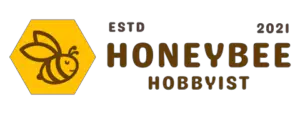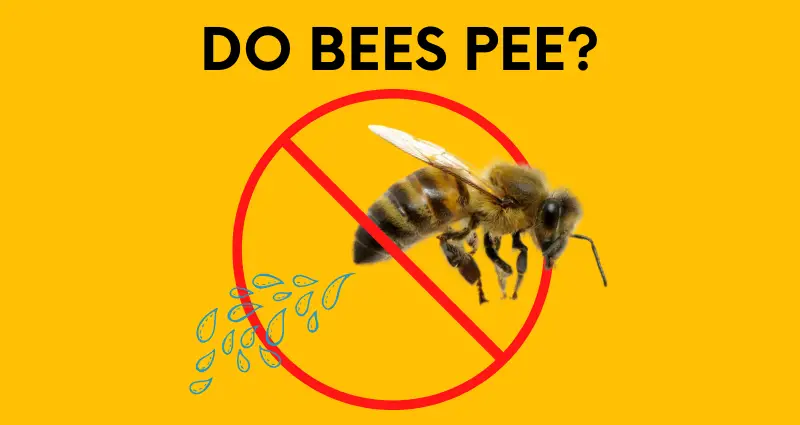Honey bees do not pee, although they expel waste from their digestive systems. They retain 90% of the water from their food and expel uric acid along with other waste as solid matter. As they fly, they expel their poop in the air rather than defecate in the hive.
While the question sounds amusing and worthy of a 7th-grade boy, it is a reasonable query about how bees dispose of waste in their systems.
The short answer to whether they pee or not is “no,” but like all creatures who digest food, they excrete undigested food, uric acid, ammonia, and other waste products.
Unlike humans and many other creatures, bees do not distinguish between liquid and solid waste products. So, technically bees do not pee like humans. But they do poop excrement that includes moisture not consumed by their body.
How Does The Bee Digestive System Work?
Fully understanding the bathroom habits of bees is dependent on knowledge of their digestive system, which consists of three parts:
- Foregut or fore intestine: Consists of the bee’s mouth, esophagus, and honey stomach or crop.
- Midgut or middle intestine: Includes the bee’s “real stomach,” which digests food.
- Hindgut or hind intestine: Includes the small intestine and rectum.
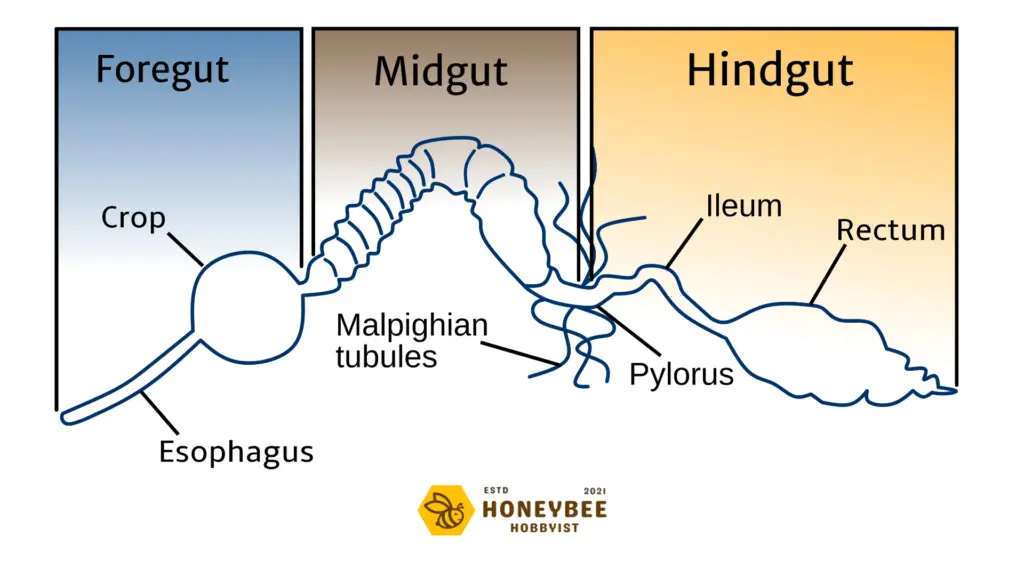
How does the bee’s digestive tract work?
- The bee eats food through the mouth, which passes through the esophagus into the crop.
- The crop swells as the bee collects nectar, which is stored there until the bee returns to the high to drop it off.
- A valve that separates the foregut and midgut, the proventriculus, grinds, and pulverizes food particles while filtering out the pollen.
- Food passes through the valve into the midgut or ventriculus, where digestion and absorption of nutrients take place.
- The Malpighian tubules located along the digestive tract remove waste products and passes them into the hindgut through the small intestines or ileum to the rectum.
- Rectal pads on the rectum reabsorb water used by the Malphiian tubes to collect waste.
- The remaining waste passes through the rectum as solid feces.
To learn more about the anatomy of honeybees, click here to read our full Bee Anatomy Guide.
Why Don’t Bees Pee Out Liquid Waste?
Bees need plenty of water to prevent drying out. Although they form uric acid, a major component of urine, their malpighian tubules function as kidneys to draw it out in a granular form. The uric acid is mixed with other wastes and evacuated as a solid.
Recent photos circulating on the internet by photographer Mark Parrott appear to show a bumblebee peeing. This is not usual bee behavior and may show a bee expelling a watery stool.
Bees can experience diarrhea from pathogens like nosema or from drinking too much water after the excessive fiber has built up in the intestines during the winter.
The nectar that bees collect is full of water. If the extra water weighs them down, they may squirt it out. This voiding is not a release of pee but just extra water.
Where Do They Excrete Solid Waste?
Honey bees are fastidious creatures who value a tidy hive. Only the queen bee, the larvae, and the drones (about 15% of the hive) poop inside, and the female workers clean up the mess.
The remaining 85% go outside to do their business, often while flying which we like to call “cleansing flights”. In cold weather, worker bees will “hold it” rather than defecate inside; if they venture out, they poop near the hive. When beekeepers notice an excess of poop in the hives, it is likely that the bees ate something that didn’t agree with them, such as fermented honey or sugar syrup, or are suffering from nosema pr dysentery.
Their good housekeeping pays off. In the cleaning process, bees sterilize their hives with antimicrobial resin that protects the hive from disease and keeps it strong.
Bee droppings may fall on cars, clotheslines, and patios near beehives. The poop may be small round dropping or smear lines, depending on how high the bee was from the ground when she let it rip. While cleaning up the sticky droppings can be difficult, they are easily washed away after pre-treating.
Bee poop is annoying, but it is not harmful to humans or animals.
What does bee poop look like?
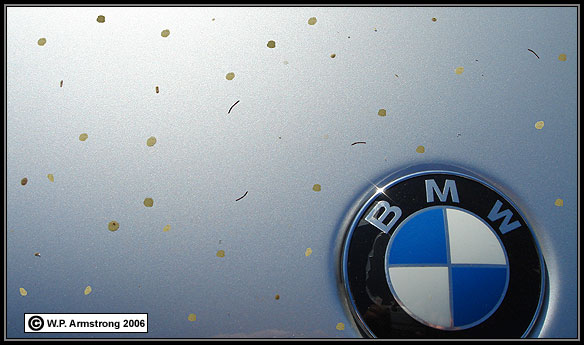
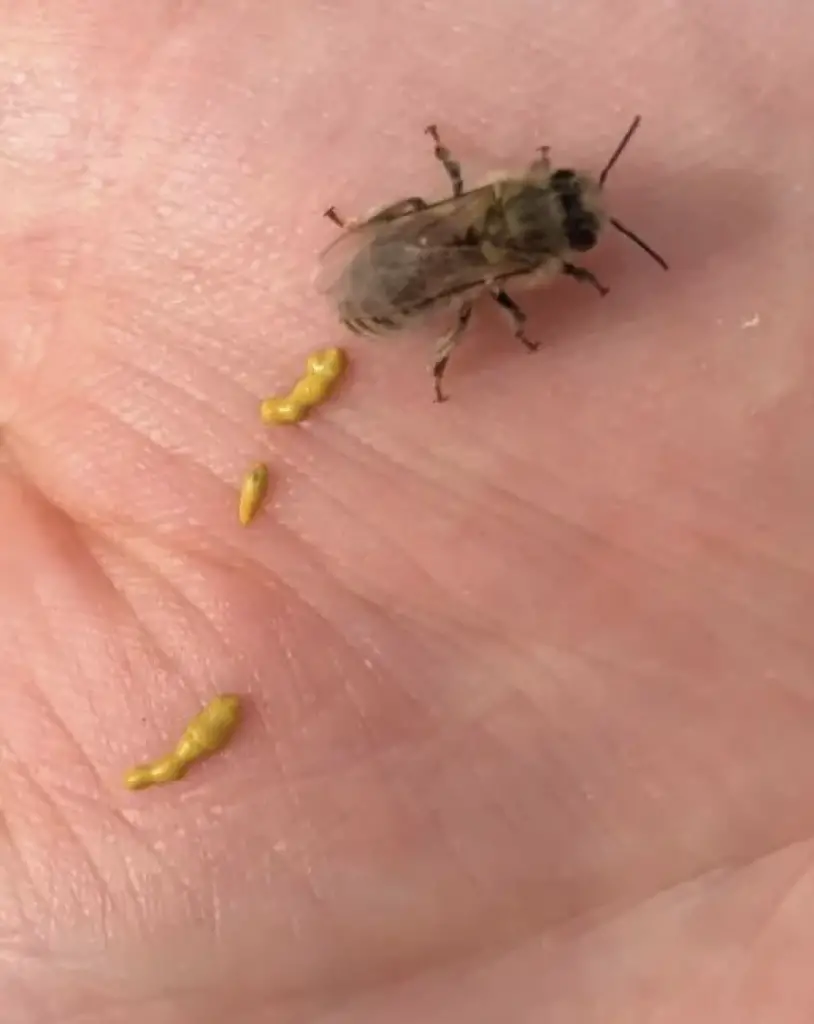
Do Bees Poop Daily?
Healthy bees poop several times a week or whenever they feel the urge. If they spend a long time exacting pollen or nectar from a flower, they may need to defecate before moving on.
If Bees Poop, Do They Fart and Vomit Too?
In humans, farts are how a body releases intestinal gas after food is digested. Gases build up from three sources:
- Swallowing air
- Bacterial overgrowth in the small intestine
- Undigested carbohydrates
Biologists disagree on whether bees need to pass gas, but many claim that as fibers from pollen and honey pass through the digestive system, air bubbles form that bees expel as farts. This is a sensible position in line with how human and animal digestive systems deal with gas.
Another debate among bee experts is whether bees vomit and make honey. Bees store nectar in a second honey stomach in the esophagus, where nectar is enriched with two bee enzymes, diastase and glucose oxidase. They regurgitate some nectar into wax honey pots in the hive to feed other bees and increase honey stores.
Some scientists point out that regurgitating nectar held in the honey stomach is not the same as vomiting, which implies emptying the stomach where digestion takes place. Once nectar passes into the digestive stomach, it cannot be expelled through the mouth.
Is Honey Really Bee Poop?
To learn more about this question’s confusion, click here to read our article “Is Honey Bee Poop, Spit, or Vomit?”.
The short answer is…
No. Honey is not bee poop, spit, or vomit.
Bee poop is a sticky, yellow substance resulting from unneeded nutrients in nectar and pollen. They expel fecal material out of the anus from the intestines. Honey is not “bee poop” as it is expelled from the mouth before it passes through the digestive process.
The way food progresses through a bee precludes it from being vomited up like honey.
The path is:
Mouth↔esophagus↔crop (honey stomach)→proventriculus (one-way valve)→ventriculus (digesting stomach)→ileum (intestine)→[waste from malpighian tubules joins food waste in the ileum]→rectum→anus.
Honey is stored undigested in the crop or honey stomach and does not go through the process that results in excrement.

